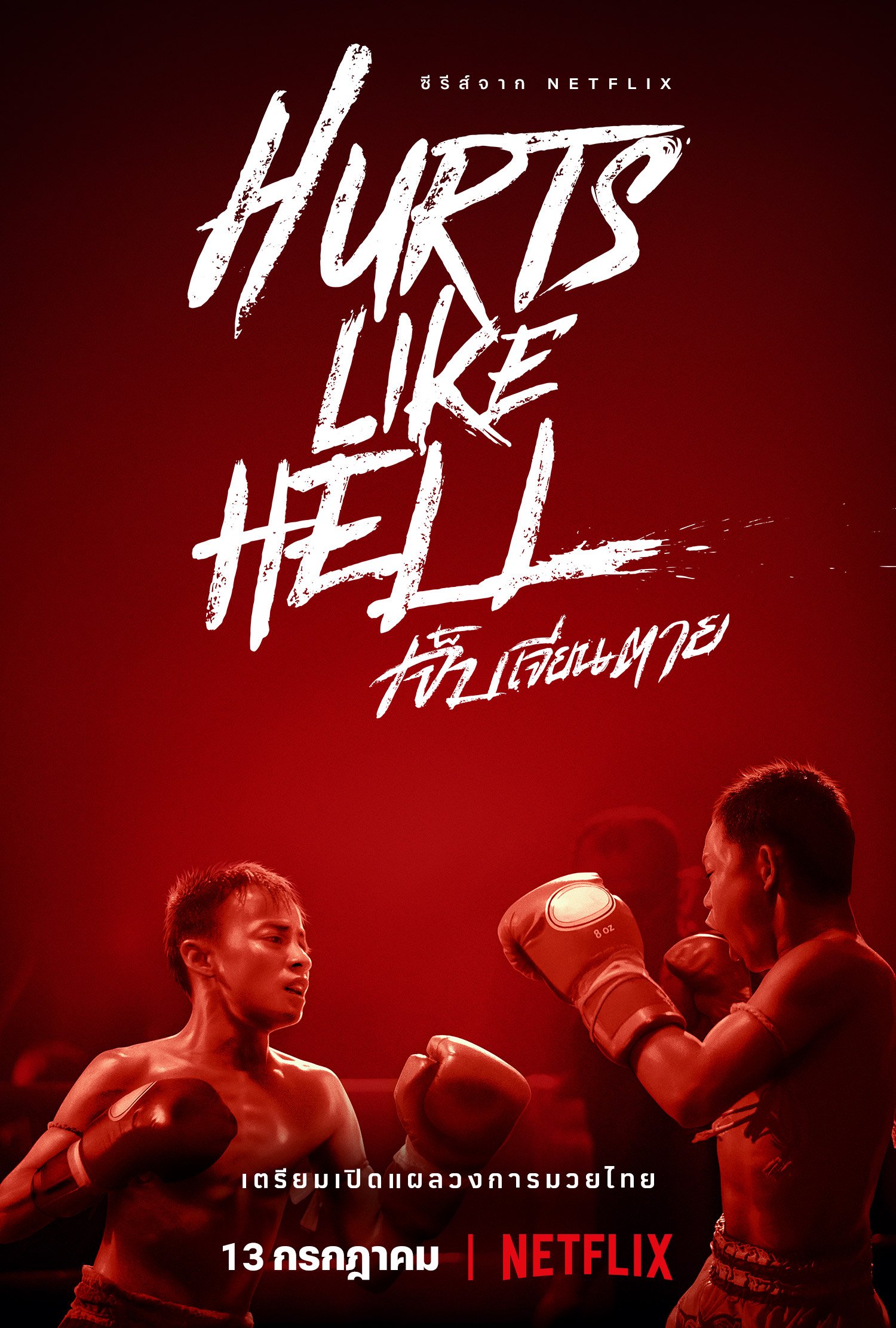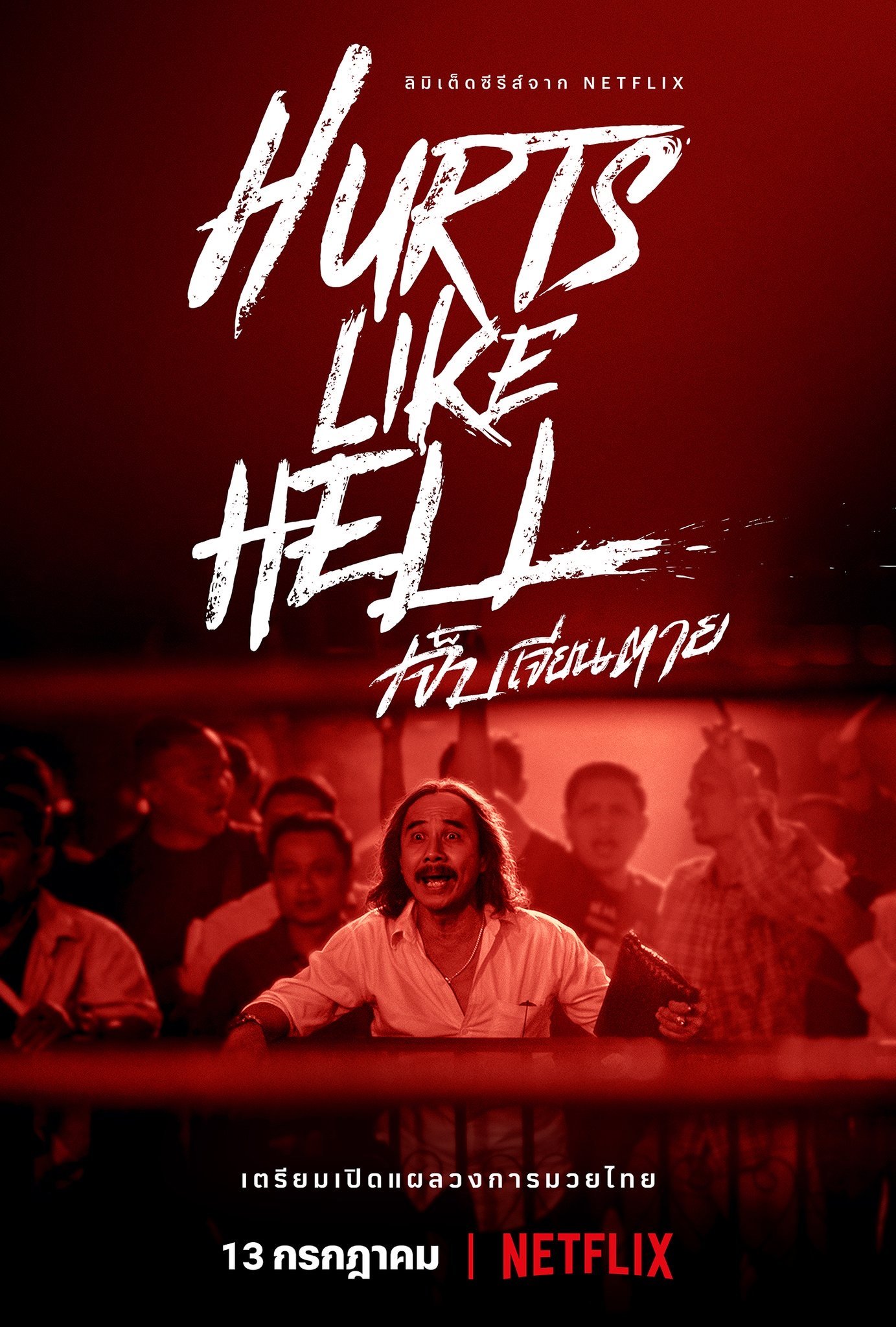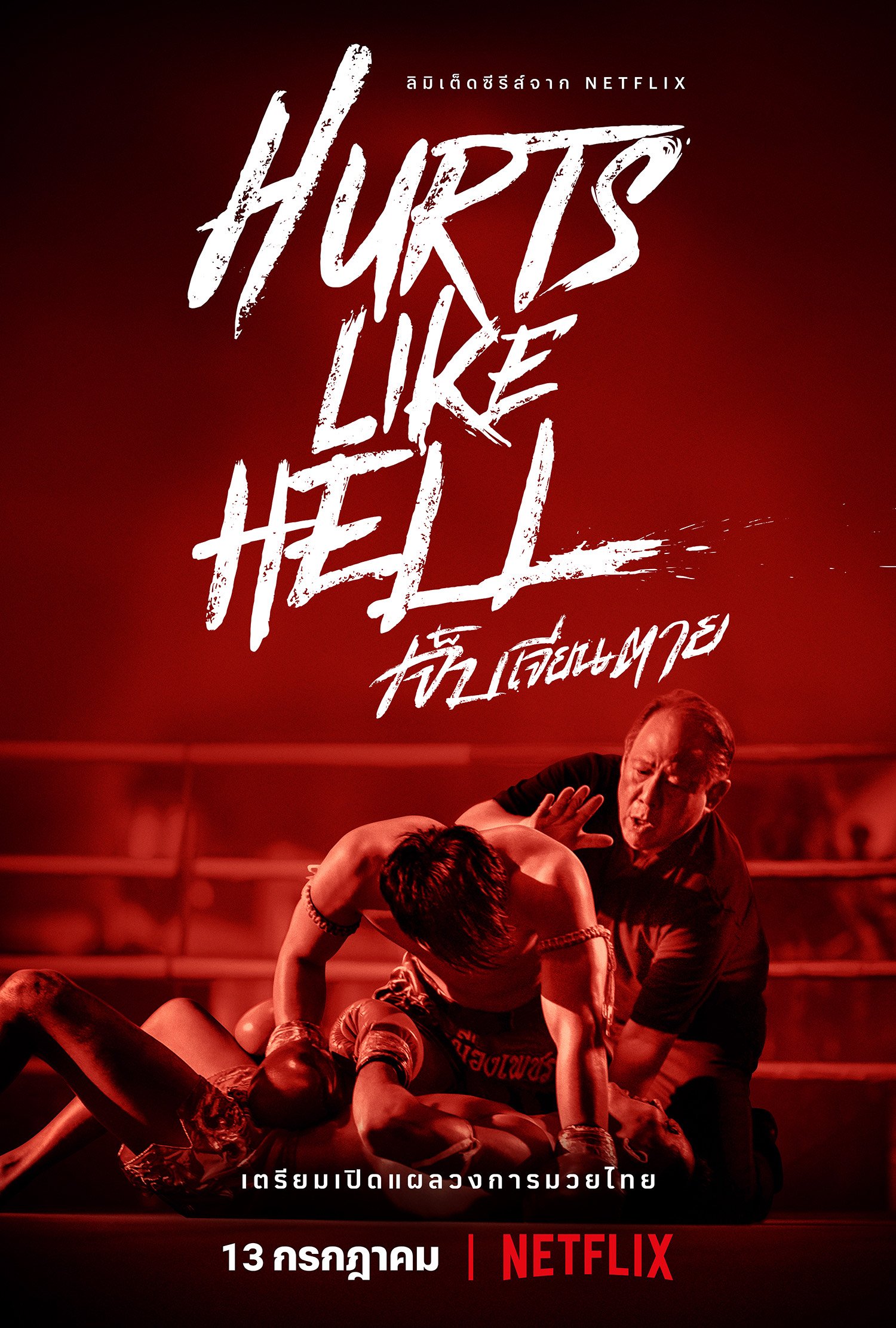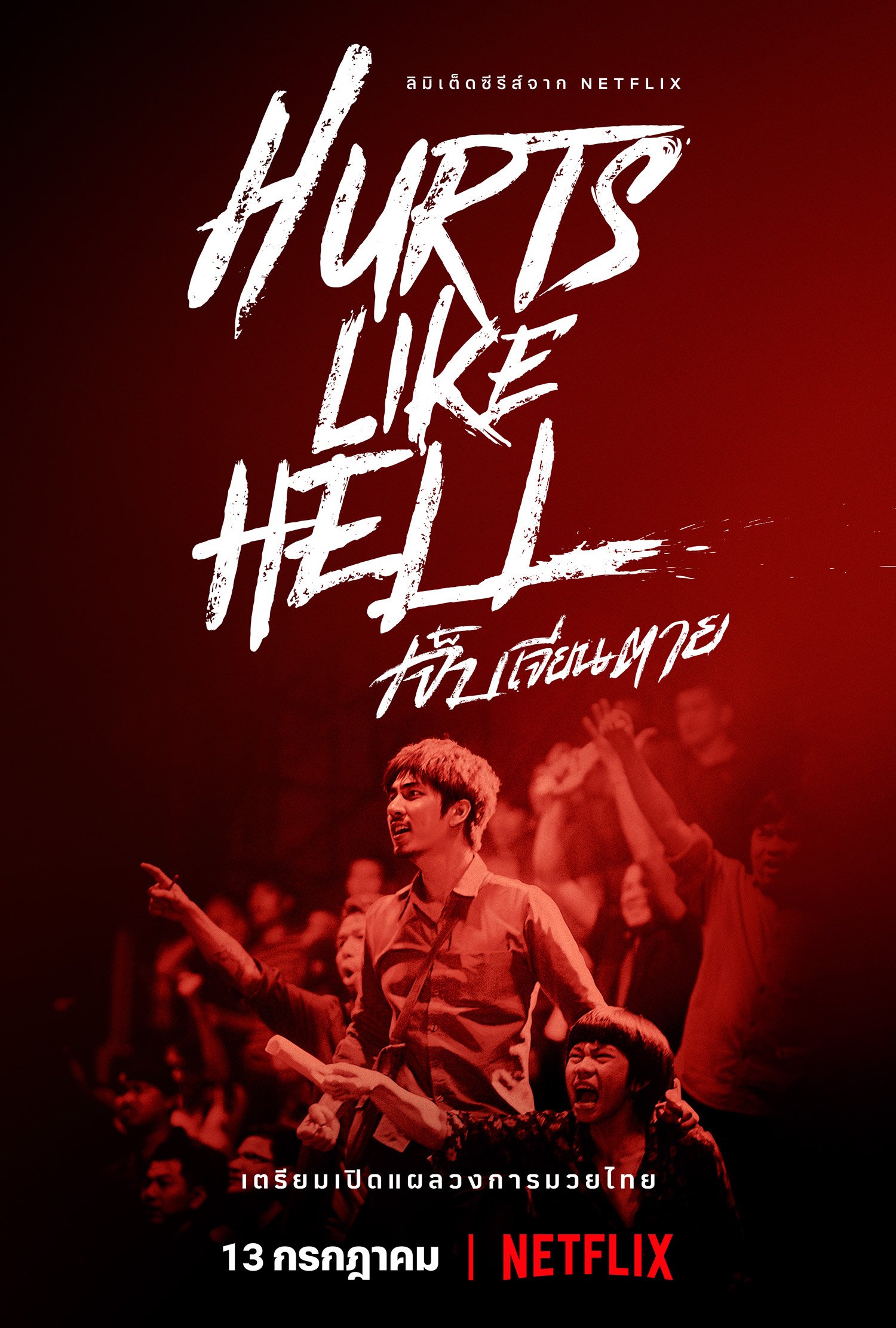Bill Hemstapat
Composer | Music Designer
The composer’s diary — hurts like hell (เจ็บเจียนตาย)
“With all of this darkness and violence in the foreground, you might ask yourself, why is anyone attracted to this world? Hurts Like Hell answers this question pretty well too. Fundamentally landing on two compelling reasons; it’s a route out of poverty for those gifted and hard-working enough, and many honest people simply love the sport, which makes it worth protecting.
Hurts Like Hell caught me off guard and has stayed with me since watching it. ”
Hurts Like Hell is one of those projects that do not come by very often. Not only that it is created by a talented young team who are relatively new to the industry, but it was also made with a unique point of view that doesn’t follow any other pop culture trends like many other Thai made series. After my first conversation with our director Khun Kittichai Wanprasert, I knew right away that this was going to be something special.
With the proposed style of story-telling, visual, and its hybrid documentary-drama nature, it’s an intriguing project to witness from the get go. Fast forward to July 13th 2022, we finally get to share this with the entire world and I couldn’t be more proud of what we’ve created together as a team. K’Kittichai and his team are avid fans of Muay Thai and they are not just grabbing some headline stories for the sake of making content out of it. There is a true passion here that I rarely see in Thai film-making and that kept me excited along our 3 years journey making this limited series. To have a story like this picked up by Netflix representing part of the Thai culture that’s largely unseen to the world is an incredible honor.
In this blog, I will be diving deeper into my journey composing a score for this unique story blending together Thai traditions, film noir, and modern Hollywood actions. I will also talk about a few key collaborators and decisions that we made creatively to strike a good balance in a documentary style story-telling and thrilling action sequences. And without any further do, let’s dive right in!
First Meeting
It wouldn’t be Bill’s diary without a memory of the first meeting for each project, right? I’m personally fascinated by every first meeting I have with a new collaborator. It’s a way for everyone to set the tone and expectation for the remaining duration of the project. It’s an opportunity for me to see the passion from the team in how they present their project as well as their vision for success. It’s also worth noting that I generally use this opportunity to ask “why are you interested in me specifically?” - sounds like a weird question to ask but I think it’s important to acknowledge what their vision of me is. I’ve done such a wide gambit of scores/projects and it’s beneficial to know which version of me should be present here.
Although I was approached to discuss the possibility of scoring Hurts Like Hell back in 2019, this first creative meeting didn’t take place until August 2020. K’Kittichai is a fan of my work on Tales of the Forgotten. He identified it as a “melodic music that doesn’t get too melodic”. I think what he means is the melody is not too dense and not over the top cheesy. It’s singable but not forceful to the audience. He also expressed that the rhythmic writing I did for TOTF is going to be essential for Hurts Like Hell. Lastly, K’Kittichai mentioned that he listens to my EP Space Studies a lot while going into work in the morning.
“It has a certain mystery to it that’s intriguing to the listener to keep exploring”
He said.
This tells me a lot about their vision for the score. It also tells me that they are coming to me for “my sound” (I honestly don’t even know what that is…) rather than going off of the past projects I’ve done. (ie. my work at PlayStation or previous animated television series) Therefor, there’s a great chance here for me to invent something and present ideas that I feel is me rather than following the references that many other projects usually have.
INITIAL CONCEPTS
After our first meeting, it’s time for some exploration. Luckily, due to the unexpected event that is the covid shutdown in early 2020, I have a lot more time in my hands to research and try out a lot of things. While still digesting the full script and creative brief given by K’Kittichai, I’ve set a few missions for myself to accomplish.
DIFFERENT STYLISTIC SCORING PER EPISODE
This was something that’s discussed heavily during our first meeting. Hurts Like Hell will tell one story but through three different perspectives. This is a unique element that I felt was worth addressing as it’s going to give depth to all the angles of the story if done properly. How I’ve divided it are as followed:
Fighter’s Perspective - Focusing on cinematic action scoring mixed with Thai traditional instruments.
Gambler’s Perspective - Infusing more drama with modern synth and electronic writing to create the pseudo “casino like” feel to the boxing stadium. I often referenced it as “Las Vegas in Bangkok” music.
Referee’s Perspective - Using a lot of film noir writing influenced by old gangster/mafia films.
THAI BUT NOT TOO THAI
While this is definitely a story from Thailand with situations deeply rooted in our culture, K’Kittichai wants this series to be a lot more “familiar” to audiences all over the world. He also felt that using too much traditional Thai music elements will make it sound too “proper” and “dated” which is an opposite direction from where he wanted to go. Hurts Like Hell represents the industry TODAY as they are with real people from today’s world living in it. He wants it to have this rough and tumble modern feel to it rather than it feeling like something our ministry of culture would be making.
SOUNDSCAPES THAT REPRESENT OLD CULTURE AND TECHNOLOGY
These boxing rings, Lumpinee Boxing Stadium to name a few, are built in the 50s and are owned by the Royal Thai Army. While there has been many updates made to them over the years, much of its structure and furniture are still the same. The signs, the bells, the old megaphone PA systems, and the neon lights are some of the things that will make you feel like walking into the past era. I wanted to create something that reflects this in a subtle way.
With all these goals set, I’m now ready to explore and start writing and recording some music!
THAI TRADITIONAL MUSIC & FIRST RECORDINGS
Interestingly enough, Muay Thai actually already has a music accompanying the match traditionally. This is generally played by a quartet of Thai instruments: Pi Chawa, 2 Klong-Kaeg (literally translated to “Indian Drums”), and a Finger Cymbal. The music they play is quite improvisational, though per each round it would get gradually faster and faster - to keep up with the intensity of the fight. This video below should serve as a good example of what this kind of music sounds like.
One of the observations I feel right away is that these “Indian Drums” are just not recognizably Thai in an instant. And yes, there are a lot of Indian roots to our culture, I feel that it may just not be distinct enough to be used as an element in the score that would standout. The Pi-Chawa, however, has an opposite problem. Because of it’s distinctive tone and how nasal-y it can get, it tends to stick out too much for the score. It also has a very limited note range and intervals. (it can’t do a full scale) But the Pi-Chawa is such a distinct sound of Muay Thai that I will have to find a way to use it somehow and pick a great moment to fully highlight it. With all of this in mind, I decided to forego the Muay Thai quartet tradition and not really paying full attention to replicating it, but rather using it as a jumping off point to write something new inspired by it.
A percussion instrument that has always been “so Thai” to me actually, is a Perngmang. It is a set of 7 drums of graded sizes which are tuned to the desired pitches and tones by stretching the leather faces and applying a mixture of kneaded cooked rice and ash to the center of one face. The tuned drums are tied together and hung in order of pitches on a semi- circular wooden framework called khok poeng (about 60 centimeters high). The lowest pitch drum is hung on the furthest left and the highest pitch drum is hung on the furthest right.
Pernmangs recording session at Minerva Studios, Bangkok. From left to right: Anirut Kuwalairut, Matas Masungsong, and Tontrakul Kaewyong
I don’t really see this instrument anywhere else in the world. And most importantly, within seconds of hearing it, I would know right away what this is. So with that I decided to book a recording session with not just one but TWO Perngmang players. This gives our recording a very unique quality as nobody has really used this instrument this way.
Matas Masungsong and Anirut Kuwalairut were the two Poeng Mang players for the session, while Tontrakul helped supervise a session with me on the zoom call. The session took place at Minerva Studios, Bangkok. We experimented with a lot of things, one of which includes a “duel” section where the two Poeng Mangs will trade solos as if they are two boxers in the ring trading punches. This ended up getting developed into the piece called Fight! in the soundtrack album, which then get music edited into many different sequences in the series.
Luckily for me, Anirut also plays Pi-Chawa, the very important sound of Muay Thai. We did quite a lot of free-form improvised recordings based on the different feels that I had told him. While it’s a very limited instrument, the sound is just so distinct that I can’t not use it. Most notably, the opening of episode 3 features a piece that was written around Anirut’s Pi-Chawa performance that I had instructed him to play. It’s an idiom that will be familiar to fans of Muay Thai as this resembles something really close to what would be played at the match. While at the same time, the cue gave it an added modern cinematic flair which is what the series needed.
Lastly, we also sampled a lot of different type of performances. These are then made into a playable Kontakt instrument which ended up being used through out the entire score.
MUSICAL SOUND DESIGN
In GHOST LAB, I talked about how important it is that the soundscape of the score reflects the “rustic” nature of the old school science presented in the film. In Hurts Like Hell, this has to be presented in a much more subtle way. The story is not focusing on the technology or even the stadium and the boxing ring itself. However, there has to be a way for me to integrate something that makes the environment feel like “hey this isn’t a nice well built stadium like the UFC or even the olympic boxing. It’s so dirty and everything here is on the verge of breaking. It’s poorly maintained.”
I have a great collection of analog synths including quirky piece of machine like SOMA Electronics Lyra 8 as well as other Eurorack modules. So I figured what if I put them all together along with a few really great chain of FXs, a guitar amp, and maybe even a tape machine?? Blending all these pieces of older machinery together sound really pleasant to me, so with that in mind and called up my good friend Tim Sonnefeld and ran this idea by him. He suggested that we head over to Kingsize Soundlabs as they have a great setup of a 24 track tape deck as well as other analog gears we could play with. Rudyard “Ruddy” Lee Cullers was appointed as the house engineer for the session.
I have to admit, I have no knowledge of tape machines. I started making music in the era where it’s primarily digital driven already. But something about the physical piece of magnetic tape head moving has always been intriguing to me. And while this all is a really cool idea, trying to pull it off has proven to be tricky that I originally thought.
Me at Kingsize Soundlabs Los Angeles in April 2021 capturing some pleasant noises made from my synthesizers
The tape deck proof to be a trickier beast than we all originally thought. Being the first ever session at Kingsize after Covid-19 lockdown to use the tape deck definitely have something to do with that. But while the 24 track tape machine was in need of a maintenance, it didn’t stop me, Tim, and Ruddy from making some noises anyway! We set up a few different chain of FX sends as I previously discussed, ran them through the tape deck, and record them into Protools. 5 hours in the studio and I realized that “This is it! This is the synth sound that represents the rustic dirty streets of Bangkok! The inconsistencies of the “unmaintained” tape and uneven signals ended up create a beautiful gritty textures that I was looking for.
I was even “performing” the tape a little big by varispeeding the tape up and down as well as riding the levels and the pitches from the synth creating these interesting subtle “wobble” that adds tension to the sound. Coupling that with playing the tape back in different speed, these unique samples were then made into a Kontakt instrument that’s used through out the series.
Some examples of samples captured from the day
jazz and film noir influences
A lot of you are probably asking, what does jazz/film noir have anything to do with Thai culture? I mean, it does and also doesn’t at the same time. One of the things that I grew up with was this genre of old Thai-pop music called “Luk Krung” (literally translated as “child of the city”). It’s hard for me to explain what it actually is so here’s a wikipedia definition for you:
Luk krung (Thai: ลูกกรุง, pronounced [lûːk krūŋ]; literally "child of the city"), also called phleng luk krung (เพลงลูกกรุง), is a genre of Thai popular music. It is a more polished, urban style, compared to its folk music counterpart, luk thung.[1] Luk krung songs commonly feature themes about feelings of society, people in the capital and occurrences that happen in the period of time. The emotions, the singing, the tone of singer, the songwriter and musicians all form to create an exquisite, delicate and gentle sound. The style of the music and lyrics are similar to poetry and the meaning of lyrics is complex.
Interesting right? This genre was made popular in the 1940s by a group called Suntharaphon band who integrated the use of big band as well as flourishing these tunes with sophisticated brass and string arrangements. With this, society began to “classify” Luk Krung music to be for people of wealth who can afford to go to high end clubs or expensive hotel ballroom in the city. While this isn’t really quite a thing in today’s society, there are still a lot of people leftover from that era whose aspirations revolve around wealth and class, therefor identifying that Luk Krung music still represents who they are. And it happens to be that a few of our characters, namely Wirat and Khom (which Episode 2 talks about extensively), are exactly this group of people who grew up in that era.
Here are some examples of what they sound like:
It is also worth mentioning that Thailand’s exposure to jazz also comes from our previous king, His Majesty King Bhumibol Adulyadej. He is known to have written a lot of his own “jazz standards” which often played through out the country during his reign (of 70 years!). While us millennials down to Gen Z-ers might not be as deeply familiar with them all, we have surely heard our parents hum along and listen to them when we grow up.
After a few experiments, Wirat’s theme was born. With just a little twist, we turned a Luk Krung inspire soundscape, which is heavily inspired by jazz bigband, into a dark film noir score that speak to not only his values, but also his dark pasts and the ever unsettling underworld of Muay Thai. The trumpet performance by my great friend Michael Dudley (who has played with Maria Schneider Orchestra, John Daversa Bigband, Brian Lynch Big Band) really put the final stamp in selling the feeling of this mature brave old man with a lonely soul. The first time I showed the theme to K’Kittichai, he said that it was a “match made in heaven” that he has never thought of. This adds a lot of depth to a story that focuses on “fighting” and adds an amazing contrast to action driven music that are ever present in the other parts of the score.
WORKING AROUND THE CLOCK
Since the production team is in Bangkok, Thailand while I’m based in Los Angeles, one of the biggest challenges here is working across the pacific ocean with 15 hours time difference. There are only a few hours in the day in which our availabilities would line up. Simple things like phone/zoom calls have to be scheduled rather than just being able to call each other during office hours. In the first year of working on Hurts Like Hell on my own, this presented a lot of challenges that I’d like to solve.
Back in 2020, I got to re-unite with my longtime friend, Satta Rojanagatanyoo working on GHOST LAB. He acted as an incredible glue for the entire production from start to finish. So now that we’re colleagues, it only makes sense to bring him onboard to this project as a full-time music supervisor role.
Myself with my score supervisor and long time friend/collaborator Satta Rojanagatanyoo (right)
Satta not only manages all communication between the production team, the director, and myself - he also helps suggest the right course of action make solution to different problems easier. For example, there was a moment in episode 3, which was slated to be a big music moment with a licensed song, it turns out that the team was unable to clear the license and use it. I myself was not really comfortable with writing a “song” of that type and was not available. Satta took the initiative in suggesting an artist local in Bangkok that sounds “similar” enough and suggest that it will be an instrumental post-rock piece. He supervised the entire process including getting the song produced, mixed, as well as relaying feedback from the production team. And this came out to be the song Stage of Glory by Old Fashioned Kid, which I barely had any hands involve in!
We got into a good habit of myself writing in the morning or afternoon, passing the cue over to Satta, then he will present the cues to the team while I sleep - leaving me notes for me to work on in the next morning. We would occasionally have a sync-up either in my early morning or late night just before one of us go to sleep. It actually adds a lot to our efficiency where it feels like at a few different points in the project, there’s always somebody working on the project 24/7.
Lastly, in the film-noir focused section of the series, it’s hard to resist borrowing his talent and knowledge in jazz writing as well as his saxophone playing. Satta contributed quite a few compositions to Hurts Like Hell which can be found in the soundtrack album as well.
CLOSING THOUGHTS
Through out the 2 years of working on Hurts Like Hell, it’s been one hell of a ride. (no pun intended!) It is the very first time that a project has come along and really allow me to explore my Thai self and how I relate to the culture that I grew up in. Over the years, I’ve found out through the process that whether I chose to or not, people will always look to me for Thai representation in western media. People will always ask:
“You’re Thai, there must be something different in your music, show us!”
While that is kind of an overly generalized statement, you just can’t help it. I’m a Thai person, working in the US. People count on me to honor the Thai flag I’ve carried with me since I left the country. I’m happy to say that Hurts Like Hell represents my first attempt at doing that in the most honest way possible. I didn’t take something that the Thai ministry of culture has been promoting to the world and ran with it. Instead, I took the things that I grew up with on the street of Bangkok and digest it into something that I believe in and resonate with as an artist.
I hope you enjoy Hurts Like Hell as much as we did making it. It is certainly not everyone’s cup of tea, but I do hope that you would give it a chance. The team has worked really hard to present this unique corner of Thai culture with the very least compromise as possible and I’m very proud of that. Thank you for reading it this far and please be sure to give the soundtrack album a listen HERE.
Hurts Like Hell is now streaming on Netflix worldwide.
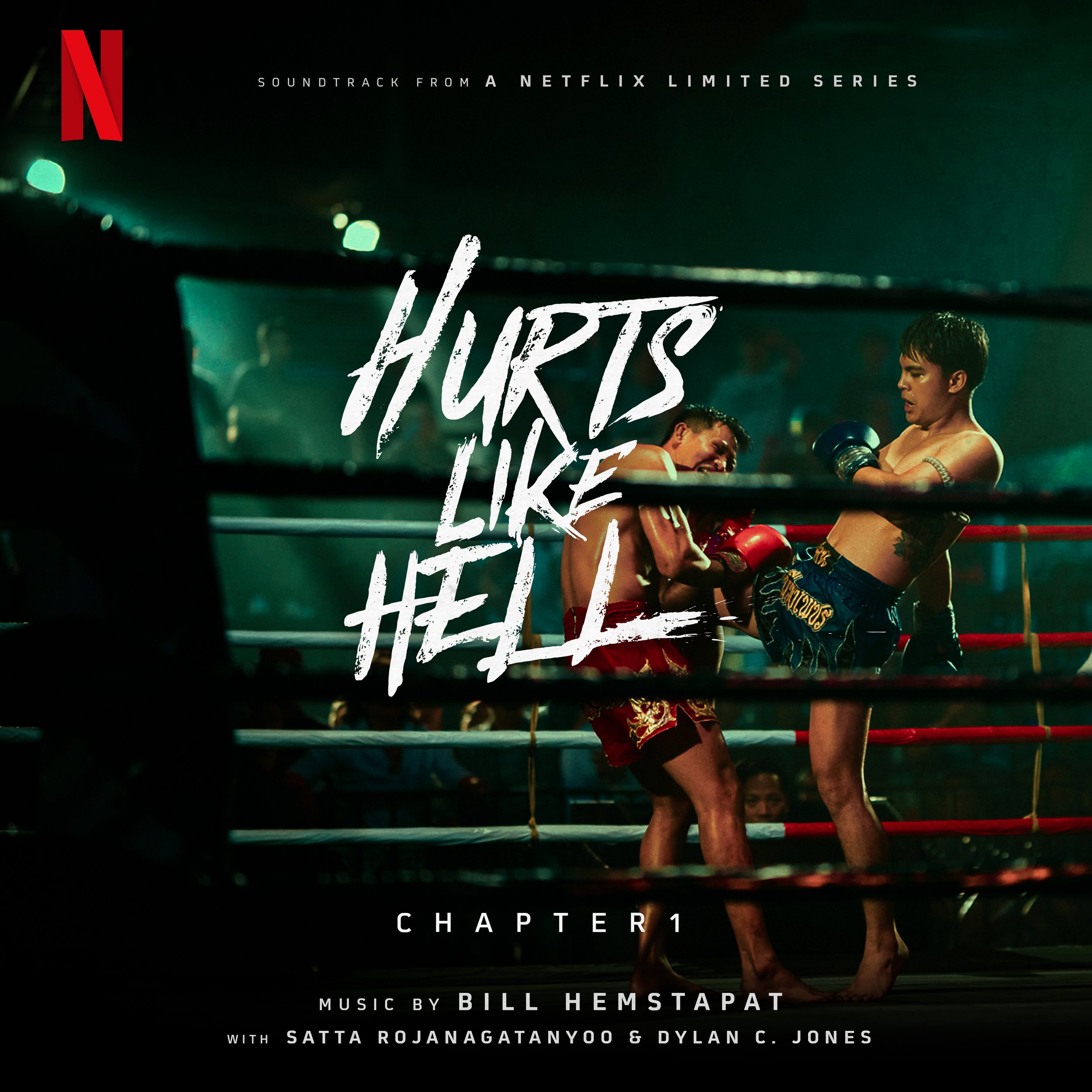
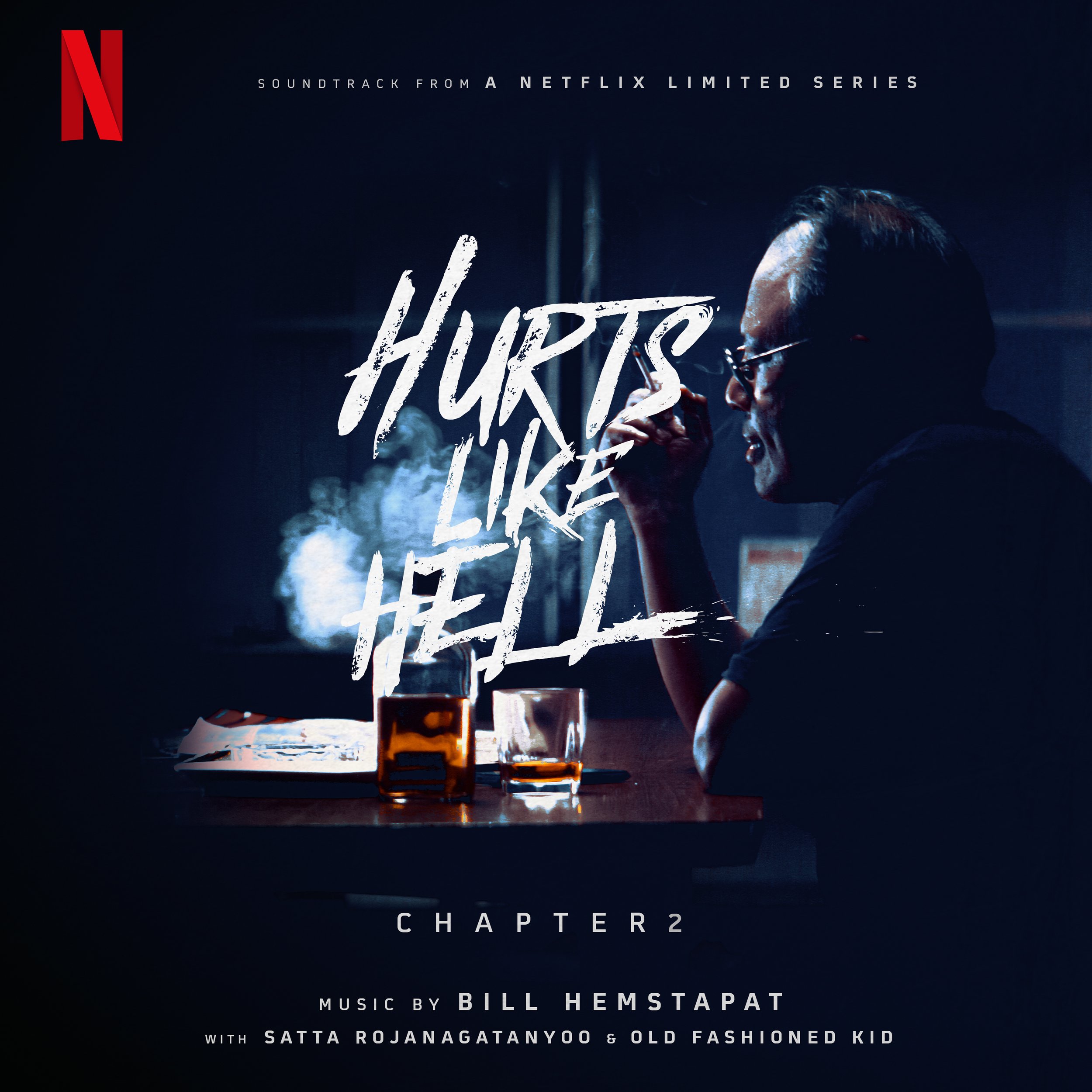

Hurts Like Hell soundtrack is divided into 3 different albums representing different pillars & chapters
Music Composed and Produced by Bill Hemstapat
Music Supervisor: Satta Rojanagatanyoo
Additional Music: Satta Rojanagatanyoo & Dylan C. Jones
Music Editor: Sonia Coronado
Thai Music Consultant & Coordinator: Tontrakul Kaewyong
Featured Musicians
Matus Masungsong - Poeng Mang (Lead)
Anirut Kuwalairut - Poeng Mang, Pi Chawa
Andrew Synowiec - Guitars
Chad Cannon - Violin, Viola, Cello
Michael Dudley - Trumpet
Music Recorded at
Minerva Recording Studios Bangkok, Thailand
Kingsize Sound Lab, Los Angeles, USA
Recording Engineers
Siwaroj Jittaniyompanit
Tim Sonnefeld
Rudyard Lee Cullers
Music Mixed by Phil McGowan @ McGowan Soundworks
Soundtrack Album Mastered by Dylan C. Jones
